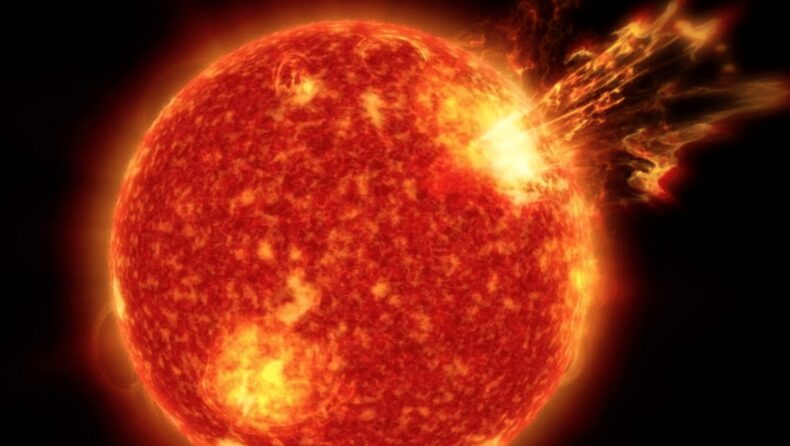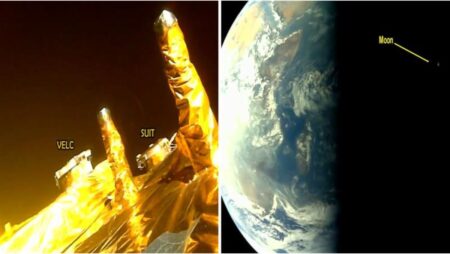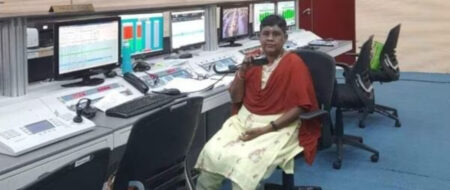The Aditya-L1 mission, with a strategic focus on solar exploration, marks India’s emergence as a key player in space research and technology. Indian Space Research Organisation (ISRO) has achieved yet another significant milestone. Building upon the success of their recent moon landing, ISRO has launched the Aditya-L1 solar mission, a historic endeavor to probe the mysteries of our nearest star, the Sun. The spectacular rocket launch from the Satish Dhawan Space Centre in Sriharikota left a trail of smoke and fire, captivating the world’s attention. The rocket carrying the mission left a striking trail of smoke and fire, captivating viewers worldwide. Nearly half a million people watched the live broadcast on the ISRO website, and thousands gathered at a viewing gallery near the launch site to witness the event.
Aditya-L1: Unlocking the Secrets of the Sun
India’s space endeavors have been a source of global fascination and pride, and the Aditya-L1 mission adds another chapter to this success story. This mission, named after the Hindi word for the Sun, “Aditya,” signifies India’s emergence as a formidable player in the field of space exploration. The Aditya-L1 mission’s primary goal is to unravel the enigmatic workings of the Sun, offering insights into solar phenomena that affect our planet and technology.
At the core of the Aditya-L1 mission lies a quest to understand the Sun’s dynamics, particularly its upper atmosphere, including the chromosphere and corona. The mission will also focus on studying the heating of the chromosphere and corona, the physics of partially ionized plasma, and the initiation of coronal mass ejections and flares.
A significant aspect of Aditya-L1 is its study of solar wind, a stream of charged particles emitted by the Sun. These solar winds can have a profound impact on Earth, causing disturbances like the mesmerizing auroras. By gaining a deeper understanding of solar winds, scientists aim to predict and mitigate their effects on our planet.
A Journey to a Gravitational Balancing Act

Aditya-L1’s journey is an arduous one, spanning approximately 1.5 million kilometers over four months. It will reach a Lagrange Point, where gravitational forces create a stable environment in space. The spacecraft will orbit this point, enabling continuous observations of the Sun’s activities.
As space becomes increasingly crowded with satellites and technology-driven communication systems, safeguarding these assets is paramount. Aditya-L1 will play a vital role in this aspect by studying the impact of solar radiation on satellites. Solar flares and coronal mass ejections have the potential to disrupt satellite communication networks, and understanding these phenomena is critical for maintaining our technology-dependent way of life.
The mission also takes on the challenge of space pollution, which has intensified with private ventures like Elon Musk’s Starlink network. By exploring how to safeguard satellites from solar radiation, Aditya-L1 contributes to mitigating the effects of space pollution, preserving the integrity of our orbits.
Beyond its immediate objectives, Aditya-L1 holds the promise of offering insights into the Sun’s influence on Earth’s climate patterns. By studying solar wind and radiation, scientists can gain valuable information for climate studies and space weather forecasting, which is increasingly vital in our interconnected world.
India’s Vision: Leading the Global Space Race
Under the visionary leadership of Prime Minister Narendra Modi, India has set ambitious goals for its space program. This includes the privatization of space launches and attracting foreign investments to bolster India’s standing in the global space market. ISRO’s successes, like the Aditya-L1 mission, serve as compelling evidence of India’s technological prowess and its dedication to addressing global challenges.
As the Aditya-L1 solar mission embarks on its quest to unveil the Sun’s secrets, the world watches with anticipation. India’s dual successes – first on the Moon and now in the study of the Sun – firmly establish the country as a trailblazer in the ever-evolving realm of space exploration and technology. Our gaze is no longer confined to Earth; it now extends to the boundless frontiers of the cosmos, awaiting exploration and discovery.













